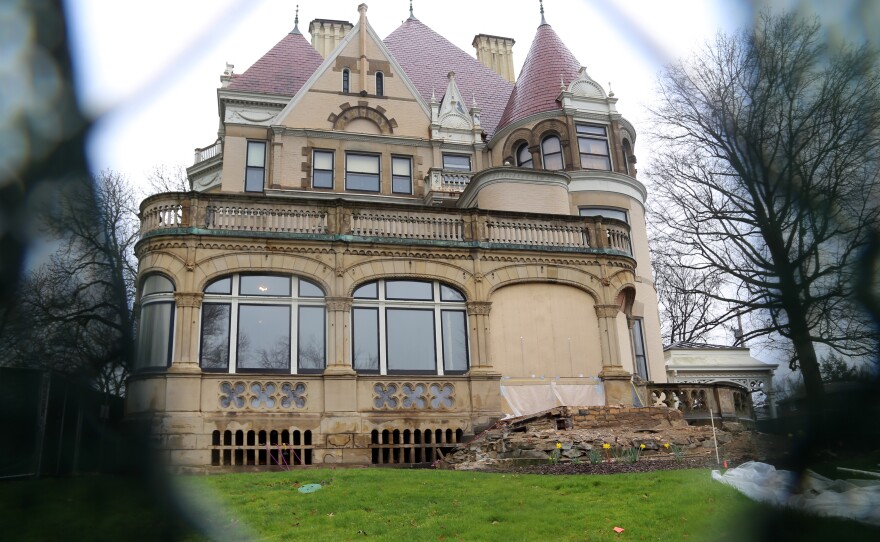An $800,000 conservation project is underway to keep one of Pittsburgh's oldest and most recognizable East End homes from sinking.
Clayton, located in Point Breeze, was home to coke and steel magnate Henry Clay Frick and family from 1883 to 1905, and is now a preserved homage to America's Gilded Age. Inside, docents guide tour guests through rooms blanketed by intricate woodwork, lush fabrics and other delicate finery popular at the turn of the last century.

Frick Museum curator Sarah Hall said the estate’s preservation is an ongoing task.
"Life is not static, and neither are the buildings we live in,” she said. "As anyone who owns a house knows, upkeep is constant."
Contractors and a team of architects with MacLachlan Cornelius & Filoni are working to restore prominent features along the home’s north and west sides dating back to an 1892 renovation by Pittsburgh architect Frederick J. Osterling that expanded the property from an 11-room Italianate-style building into the 23-room chateau-style mansion still on display.
Jennifer Rogers, the Frick’s social and new media manager, said decades of freeze-thaw cycles slowly deteriorated parts of the foundation, concrete subflooring and underlying steel beams, causing half an inch of subsidence at the home’s northwest corner.

Fencing visible from Penn Avenue since October has cloaked the temporary removal of two cascading, sandstone staircases on either side of Clayton’s enclosed porch, which will be rebuilt piece-by-piece after craftsmen repair and realign masonry; treat and replace areas of corroded steel; and reassemble the façade.
Hall said the damage and efforts to mitigate it have been mostly invisible to the public, but frequent visitors may have noticed fine cracks in the porch’s mosaic flooring, which signaled alarm bells for preservationists. That was the first clue, she said. Measurable sinkage was next.

Hall said the project offers a bonus for visitors.
Artisans from McKay Lodge Art Conservation Laboratory in Cleveland are blending existing material with solid-color replacements to help restore an intricate terrazzo panel on the landing. Hall said guests this summer will be among the first to see it since curators covered it with matting nine years ago to halt weathering and protect the area for future work.
“It’s a house museum, but it wasn’t built as a museum,” she said, comparing the home to Frick’s more modern and specially designed art expansion on the southeastern end of the estate.
“We may be the Frick family home,” she said, “but we’re an illustration of this time period in Pittsburgh when we were the industrial center of America and a powerhouse of the Gilded Age.”

Curators lovingly include Clayton among Pittsburgh’s informal docket of “Millionaire’s Row” homes, which have colloquially included the family estates of wealthy local industrialists and financiers residing on Fifth Avenue in Shadyside, Penn Avenue in Point Breeze and Ridge Avenue on the North Side. Only a handful remain.
Hall credits Clayton's longevity to the Fricks themselves, who unlike many of their neighbors, never sold the home. Helen Clay Frick, the only surviving daughter of Henry, inherited the estate from her late mother in the 1930s. From the beginning, Hall said she approached its upkeep with preservation in mind.
“We tell a much bigger story,” she said, “than the story of the Frick family who lived here.”








